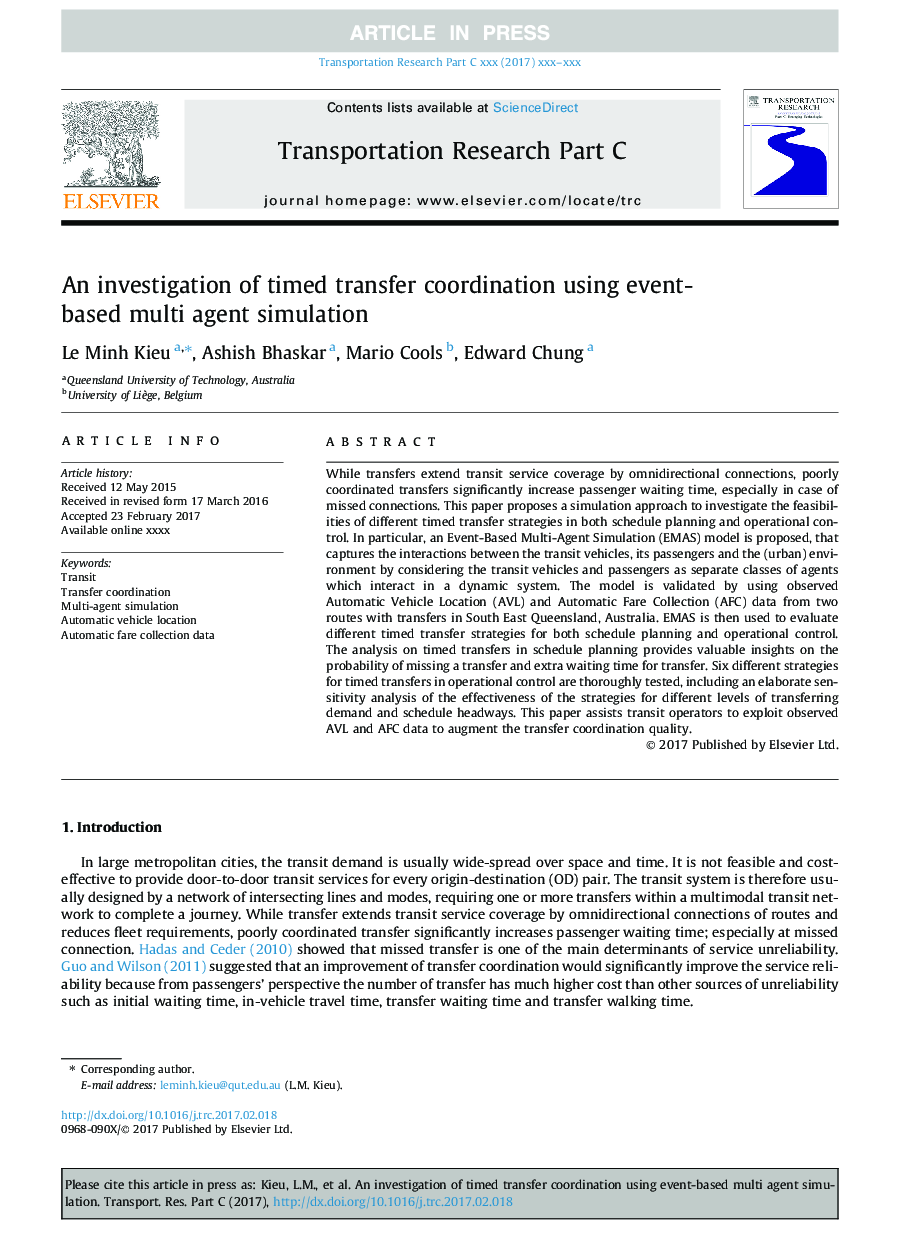| Article ID | Journal | Published Year | Pages | File Type |
|---|---|---|---|---|
| 4968402 | Transportation Research Part C: Emerging Technologies | 2017 | 16 Pages |
Abstract
While transfers extend transit service coverage by omnidirectional connections, poorly coordinated transfers significantly increase passenger waiting time, especially in case of missed connections. This paper proposes a simulation approach to investigate the feasibilities of different timed transfer strategies in both schedule planning and operational control. In particular, an Event-Based Multi-Agent Simulation (EMAS) model is proposed, that captures the interactions between the transit vehicles, its passengers and the (urban) environment by considering the transit vehicles and passengers as separate classes of agents which interact in a dynamic system. The model is validated by using observed Automatic Vehicle Location (AVL) and Automatic Fare Collection (AFC) data from two routes with transfers in South East Queensland, Australia. EMAS is then used to evaluate different timed transfer strategies for both schedule planning and operational control. The analysis on timed transfers in schedule planning provides valuable insights on the probability of missing a transfer and extra waiting time for transfer. Six different strategies for timed transfers in operational control are thoroughly tested, including an elaborate sensitivity analysis of the effectiveness of the strategies for different levels of transferring demand and schedule headways. This paper assists transit operators to exploit observed AVL and AFC data to augment the transfer coordination quality.
Related Topics
Physical Sciences and Engineering
Computer Science
Computer Science Applications
Authors
Le Minh Kieu, Ashish Bhaskar, Mario Cools, Edward Chung,
